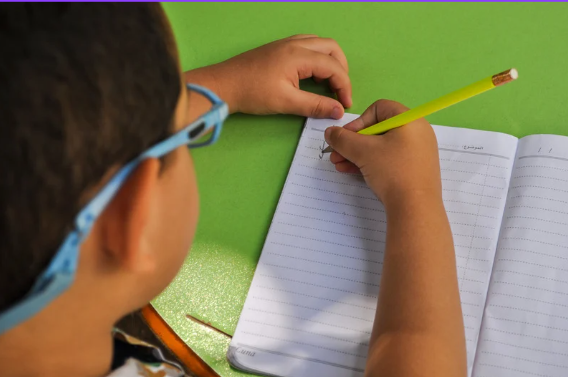To most parents’ surprise, handwriting is a complex task that requires numerous sensory systems, muscles, and brain-body connections to work together.
When parents see that their child’s handwriting is messy, their child avoids handwriting or that they have a very awkward grip, they may think that more practice or introducing pencil grips is the solution.
However, often, difficulties with handwriting are giving us clues to potential underlying issues with foundational skills like poorly functioning vestibular system, poor motor planning skills or problems with visual perception. When foundational skills are underdeveloped or weak, handwriting can be an extremely challenging and frustrating task for children.
In this blog, we will explore some of the underlying causes and what you can do as a parent to make handwriting easier for your child.
Brain-body teamwork involved in handwriting:
Now, that we have established that handwriting is more than getting the pencil to move on a paper, let’s have a look at what systems and foundational skills must work together for handwriting:
- Postural control- being able to sit upright and stabilise shoulders and arms to allow hands and fingers perform fine motor tasks.
- Sensory processing- integrating information from the body (where it is in relation to the task and environment) with information from the external environment (sounds, visual information).
- Fine-motor skills- making small, precise movements with hand and fingers.
- Visual-motor skills- perceiving visual information and producing a motor action, e.g. seeing a shape and being able to copy it.
An occupational therapist can conduct an assessment to pinpoint the underlying causes of difficulties with your child’s handwriting.
Some common underlying issues are:
- Poorly functioning vestibular system, affecting child’s postural control and ability to sit at the desk
- Difficulties crossing the midline and bilateral coordination
- Visual perception difficulties
- Poor tactile (touch) discrimination
- Praxis/motor planning issues
- Hypermobile or low muscle tone including posture
- Difficulties with spatial awareness
- Poor hand-eye coordination
Occupational therapists conduct investigations to dig deeper and find the root cause of the handwriting difficulties. This helps them target the underlying causes of the handwriting difficulty and strengthen foundational skills to make the complex task of handwriting successful for the child.
Here are some fun ideas for home that you can do to help your child:
Movement activities to support upper body strength:
- Animal walks (bear, crab) to strengthen and stabilise shoulders and wrists
- Wall or chair push-ups
- Wheelbarrow walks with adult support
- Climbing e.g. on play equipment at the park, rock climbing
- Monkey bars and trapeze to strengthen grasp and shoulders
- Pulling and pushing objects
Movement activities to support posture:
- Swinging
- Jumping on a trampoline
- Balancing on a gym ball or Bosu ball
- Crawling through a tunnel or over a crash mat/cushions
- Rolling down a hill or in the backyard
- Star jumps/cartwheels or tumbling
Activities to develop fine-motor skills, bilateral coordination, and hand strength:
- Theraputty exercises: rolling, pinching, hiding small items like beads
- Cutting paper, putty, etc.
- Bead stringing with elastic cord or shoelace
- Using pegs, tweezers, tongs, or chopstick games for pincer grasp.
- Paper tearing and scrunching to build grip strength
Activities to improve visual skills:
- Puzzles
- Lego and building blocks
- Mazes
- Connect 4
- Sports such as hand ball, tennis, throwing/catching
- Word searches
Chat to one of the therapists at Family Connections for specific questions about how you can support your child with their handwriting. Happy Handwriting!
Author: Karen Fahmy – Occupational Therapist


0 Comments